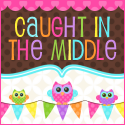At the end of the school day today, I heard that legendary children's author Maurice Sendak passed away at 83. Along with his most famous book, Where the Wild Things Are, his books were far from traditional and included a balance of dark and light themes.
His characters are headstrong and bold, his stories were sometimes scary and unsettling, but they are beloved by children of several generations. Much has been written about how his stories can be used to teach story elements and literature to younger readers, but when I think of the life of Sendak, I hear nothing but possibilities for older students.
Sendak grew up always on the margins of society and remembered his childhood often through the lens of the public tragedy and terror that framed it. He grew up in New York City and recalls World War II, the Holocaust, the Depression and the Lindbergh kidnapping and used these childhood fears and traumas to reach out artistically to younger readers.
He was writing in a time when picture books were based largely on classic tales and took a heavily moralistic and sanitized view of storytelling. Instead, he knew of the torments of youth and faced the fears head on instead of ignoring them completely. It is largely believed that the image from Outside Over There of a baby stolen in the night by goblins on a ladder to his window was inspired by his childhood fixation on the Lindbergh kidnapping.
About a year ago, I heard a story on my local NPR station about Sendak, his life and his recent exhibition of drawings at the Rosenbach Museum. In hearing his life story, I did not think of young children listening to story time, but instead older students analyzing his art and his writing through the lens of what he saw and experienced. I imagined fine arts students looking for meaning in his work and history students framing his stories in 20th century history.
I suppose what I would like this remembrance to express is that there is something deeper and more meaningful in all children's literature that older students and adults can enjoy, but this is particularly true about the work of Maurice Sendak. I would hate to see him only remembered in the elementary grades over the coming weeks, but instead for students of all ages to take a moment to appreciate the many levels of his work.
Further Reading:
WHYY Video on the Rosenbach Museum Exhibition, Sendak on Sendak
Maurice Sendak Wikipedia Article
New York Times Obituary
Subscribe to:
Post Comments (Atom)










When I was a art history student at La Salle University I had the honor of having a private tour of the collection of his works at the Rosenbach Museum in Philadelphia. I have never forgotten how he demonstrated his imagination through colorful characters that transcend age.
ReplyDelete